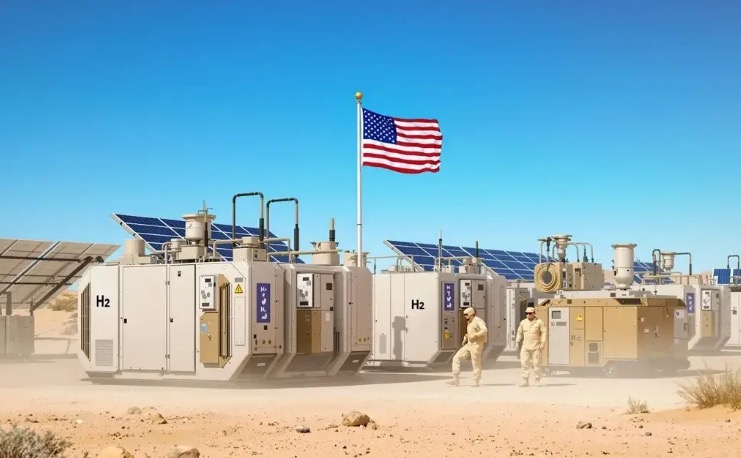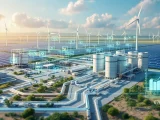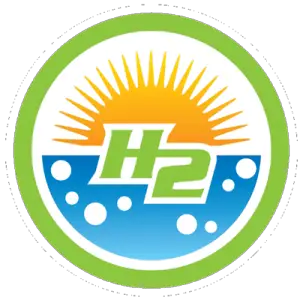
U.S. Air Force Pilots Green Hydrogen Generators for Combat-Ready Microgrids
April 19, 2025Pioneering Power: The Air Force Bets on Clean Hydrogen
Decarbonization isn’t just hitting big cities and major industries anymore—it’s heading straight to the front lines. The United States Air Force (USAF) is diving into the future of clean energy, testing hydrogen-powered microgrids that could change the way military missions are powered. Imagine a power source that’s portable, dependable, and cleaner for the environment. That’s no longer a fantasy—it’s already in the works, thanks to forward-leaning projects in partnership with companies like NovaSpark Energy Corp., which brings hydrogen deployment tech right to defense operations.
Hydrogen Meets the Mission
Military forces around the world are rethinking energy—from reducing emissions to building greater resilience—and the Air Force is fully on board. Through this new wave of pilot projects, the USAF is exploring how green hydrogen can power missions in tough locations where traditional energy sources fall short. The concept is simple but powerful: use hydrogen fuel cell generators within mobile microgrids that don’t rely on existing infrastructure. This shift could be a huge win in remote and high-risk environments where diesel hasn’t always been ideal. Why? Well, unlike diesel generators, hydrogen fuel cells run quieter and emit nothing but water vapor—making them a win for both stealth and sustainability.
Breaking Down the Tech
So, how does this high-tech power system actually work? It’s built around two core technologies that come together to create a portable, emissions-free energy setup:
- Electrolyzers: These devices break water into hydrogen and oxygen using electricity, ideally from renewable sources like solar or wind. This is where electrolysis comes into play.
- Hydrogen Fuel Cells: They take that hydrogen and turn it back into electricity in a sleek chemical process that spits out only heat and water as leftovers.
It’s a flexible, self-sustaining system that’s perfect for places where traditional fuel and power lines are out of the question.
The HyTEC Project: Testing in the Field
One major initiative putting this tech to the test is the HyTEC (Hydrogen Tactical Expeditionary Capabilities) project. Part of a larger push by the Department of Defense to modernize energy systems, this compact, hydrogen-powered generator is set to debut at Marine Corps Base Hawaii in April 2025. The goal? See how well it holds up under real operational conditions. They’re looking to evaluate how resilient, efficient, and battlefield-ready hydrogen power can be—right down to the feasibility of making green hydrogen on-site.
Why the Military’s Move Matters
The armed forces have always been early adopters when it comes to breakthrough technologies—especially in energy. From putting solar panels on bases to testing biofuels in jet engines, the military sets the pace. Now, hydrogen power is joining the ranks as a serious candidate for scalable, reliable, and emissions-free energy. Thanks to firms like NovaSpark Energy Corp., the Air Force is proving that hydrogen systems can deliver under pressure. And if they can work there, they can work almost anywhere—from disaster zones to remote mountain towns dealing with weak or nonexistent power grids.
The Bigger Picture: Civilian Potential
Let’s be real: what makes it in the military often ends up transforming the civilian world, too. We’re talking about potential applications in things like emergency relief efforts, island or rural communities still relying on diesel, and areas with fragile energy infrastructure. If hydrogen tech proves itself in these military pilots, it could spark real momentum for investment in broader hydrogen infrastructure and next-gen sustainable energy deployments. Every gallon of traditional fuel replaced by hydrogen helps drive down emissions—and not just for one mission, but potentially for communities and industries all over the map.
Looking Ahead: Hydrogen’s Role in Mission Assurance
We’re still in the early innings, but the momentum is undeniable. The U.S. Air Force and other branches of the Department of Defense are pushing forward with plans to make energy grids smarter and more resilient. These hydrogen microgrid trials are laying the foundation for a future where these systems don’t just generate electricity—they also run vehicles, support field logistics, and cut down fuel supply chain risks. For the Air Force, it’s not just about going green—it’s about staying ready. And if hydrogen can support missions in the toughest environments on Earth, there’s no telling how far this technology can go.
Updated on May 29, 2025 – To correct inaccuracies in the original content



 With over 15 years of reporting hydrogen news, we are your premier source for the latest updates and insights in hydrogen and renewable energy.
With over 15 years of reporting hydrogen news, we are your premier source for the latest updates and insights in hydrogen and renewable energy.